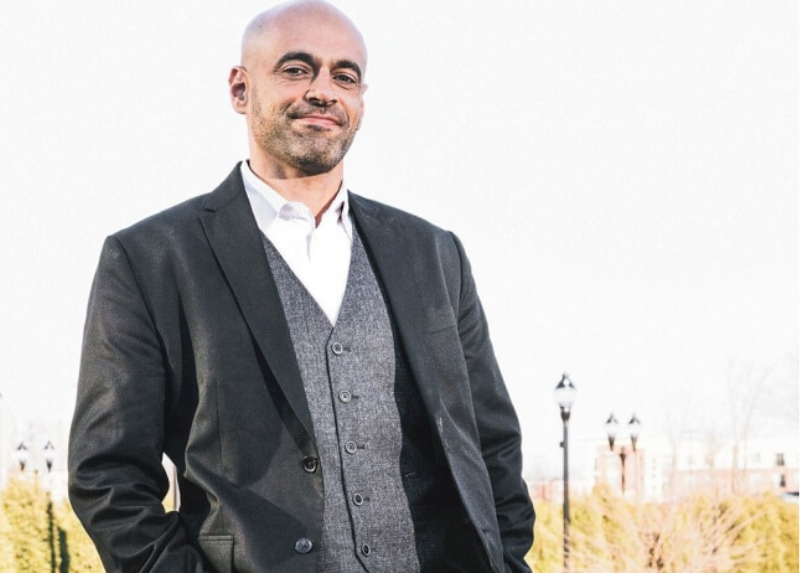Creating a Consumer-Grade Internal Communication Experience
Reflect on our recent webinar...

Lee Smith
Minutes
13th June 2025
Employee Experience,
Communication,
Workplace Experience.
Communication,
Workplace Experience.
What if internal communication was as smart, intuitive, and personalised as Netflix? That was the provocative idea at the heart of our latest EX Space webinar, where Emma Bridger sat down with Tarek Kamil, founder of Cerkl, to explore the next frontier of internal communication.
In a wide-ranging and energising conversation, the pair unpacked why internal communication is still playing catch-up with marketing and customer experience — and how we finally have the tools to change that.
In a wide-ranging and energising conversation, the pair unpacked why internal communication is still playing catch-up with marketing and customer experience — and how we finally have the tools to change that.
This wasn’t just a conversation about channels or platforms. It was a call to fundamentally rethink how we treat employees — not as passive recipients of information - but as individuals with their own personal preferences, pressures, and limited time. As Tarek put it: “We’re drowning in communication, yet still missing the stuff that matters.”
Tarek’s journey into internal communication started unexpectedly — not in a corporate setting, but through volunteering at his children’s school in Cincinnati. Despite the school sending messages through multiple channels — email, Facebook, paper notes — parents still missed important updates. He was fascinated by the disconnect.
"We now create more communication in a few hours than we did in all human history up to 2003," he said. In an age of information overload, simply sending more messages isn’t the solution — in fact, it’s part of the problem.
And this challenge is just as acute inside organisations. Employees are bombarded with messages across formal channels - Teams, Slack, intranets, newsletters, and email – not to mention all the communication that comes from leaders, managers and peers. Rather than helping, this over-communication creates noise, fatigue, and disengagement. Critical messages get buried. Optional content gets ignored. Everyone loses.
Tarek’s journey into internal communication started unexpectedly — not in a corporate setting, but through volunteering at his children’s school in Cincinnati. Despite the school sending messages through multiple channels — email, Facebook, paper notes — parents still missed important updates. He was fascinated by the disconnect.
"We now create more communication in a few hours than we did in all human history up to 2003," he said. In an age of information overload, simply sending more messages isn’t the solution — in fact, it’s part of the problem.
And this challenge is just as acute inside organisations. Employees are bombarded with messages across formal channels - Teams, Slack, intranets, newsletters, and email – not to mention all the communication that comes from leaders, managers and peers. Rather than helping, this over-communication creates noise, fatigue, and disengagement. Critical messages get buried. Optional content gets ignored. Everyone loses.
IC is lagging behind
Despite its vital role in enabling alignment, engagement, and culture, internal communication hasn’t kept pace with other disciplines — particularly marketing. As Emma pointed out, even once-promising tools like Jive, Chatter, and Workplace came and went without truly transforming the employee experience.
According to Tarek, it’s partly a question of perception. “The people function — HR, internal comms — is seen as important, but not strategically valuable. Unlike sales or marketing, it doesn’t have a clear ROI story.”
This echoes what many communicators already know. Internal comms is often viewed as a support function, rather than a strategic enabler. And yet, we know from research and experience that effective internal communication boosts engagement, improves retention, reduces risk, and contributes to a host of other key business outcomes.
The good news? A shift is coming.
Tarek pointed to the rise of marketing technology as an example. In the 1990s, very few companies had Chief Marketing Officers — because marketing wasn’t measurable. But with the arrival of digital tools and analytics, marketing became quantifiable, accountable, and strategic. CMOs gained a seat at the table.
Internal comms is now on the brink of a similar transformation — fuelled by AI, behavioural data, and personalisation.
According to Tarek, it’s partly a question of perception. “The people function — HR, internal comms — is seen as important, but not strategically valuable. Unlike sales or marketing, it doesn’t have a clear ROI story.”
This echoes what many communicators already know. Internal comms is often viewed as a support function, rather than a strategic enabler. And yet, we know from research and experience that effective internal communication boosts engagement, improves retention, reduces risk, and contributes to a host of other key business outcomes.
The good news? A shift is coming.
Tarek pointed to the rise of marketing technology as an example. In the 1990s, very few companies had Chief Marketing Officers — because marketing wasn’t measurable. But with the arrival of digital tools and analytics, marketing became quantifiable, accountable, and strategic. CMOs gained a seat at the table.
Internal comms is now on the brink of a similar transformation — fuelled by AI, behavioural data, and personalisation.
So what does consumer-grade actually mean?
“Consumer-grade” is one of those phrases we’re starting to hear a lot — but what does it actually mean in the context of internal communication?
Tarek used a compelling example. Let’s say Natalie works in the Customer Success team. She needs to see certain updates — compliance deadlines, mandatory training, benefit changes. These are prescriptive messages, and missing them could pose real legal or operational risks.
At the same time, Natalie also has interests and aspirations. She might care about wellbeing content, volunteering opportunities, or internal vacancies. These are subscriptive messages — nice to have, but not business-critical.
A consumer-grade approach does two things:
1. It ensures Natalie sees the messages that matter, without being bombarded from every angle.
2. It curates content based on her behaviour and preferences — just like Netflix or Spotify does.
And crucially, it does this dynamically across every channel: intranet, email, Teams, Slack, mobile app. It learns what she's seen, when she engages, and how she prefers to receive information — and adapts accordingly.
Tarek used a compelling example. Let’s say Natalie works in the Customer Success team. She needs to see certain updates — compliance deadlines, mandatory training, benefit changes. These are prescriptive messages, and missing them could pose real legal or operational risks.
At the same time, Natalie also has interests and aspirations. She might care about wellbeing content, volunteering opportunities, or internal vacancies. These are subscriptive messages — nice to have, but not business-critical.
A consumer-grade approach does two things:
1. It ensures Natalie sees the messages that matter, without being bombarded from every angle.
2. It curates content based on her behaviour and preferences — just like Netflix or Spotify does.
And crucially, it does this dynamically across every channel: intranet, email, Teams, Slack, mobile app. It learns what she's seen, when she engages, and how she prefers to receive information — and adapts accordingly.
From distribution lists to dynamic delivery
The real mindset shift is this: moving from campaign thinking to content thinking.
In the traditional model, communicators build an email, request a distribution list (often from IT or HR), send it out, and hope it lands. There’s little visibility into who saw what, and messages are often duplicated across multiple channels. The result? Duplication, guesswork, and disengagement.
A smarter approach flips the model:
In the traditional model, communicators build an email, request a distribution list (often from IT or HR), send it out, and hope it lands. There’s little visibility into who saw what, and messages are often duplicated across multiple channels. The result? Duplication, guesswork, and disengagement.
A smarter approach flips the model:
- Start with great content
- Define who it's for and when it's needed
- Let systems surface it across channels based on behaviour and preferences
This reduces noise, avoids repetition, and ultimately respects employees’ time and attention.
In a world where attention is scarce, communication that saves people time is far more powerful than communication that simply adds more to their inbox. Personalisation isn’t a gimmick — it’s a way to make work better.
We’ve known for years that relevance drives engagement. The difference now is that, thanks to AI, we can actually deliver on that promise.
Consumer-grade communication isn’t about copying marketing tactics — it’s about adopting a mindset that puts the employee experience first. Less noise. More relevance. Real impact.
If we want people to care about the messages we send, we need to care about how they experience them.
In a world where attention is scarce, communication that saves people time is far more powerful than communication that simply adds more to their inbox. Personalisation isn’t a gimmick — it’s a way to make work better.
We’ve known for years that relevance drives engagement. The difference now is that, thanks to AI, we can actually deliver on that promise.
Consumer-grade communication isn’t about copying marketing tactics — it’s about adopting a mindset that puts the employee experience first. Less noise. More relevance. Real impact.
If we want people to care about the messages we send, we need to care about how they experience them.

